The Nursing Process The Nursing Process
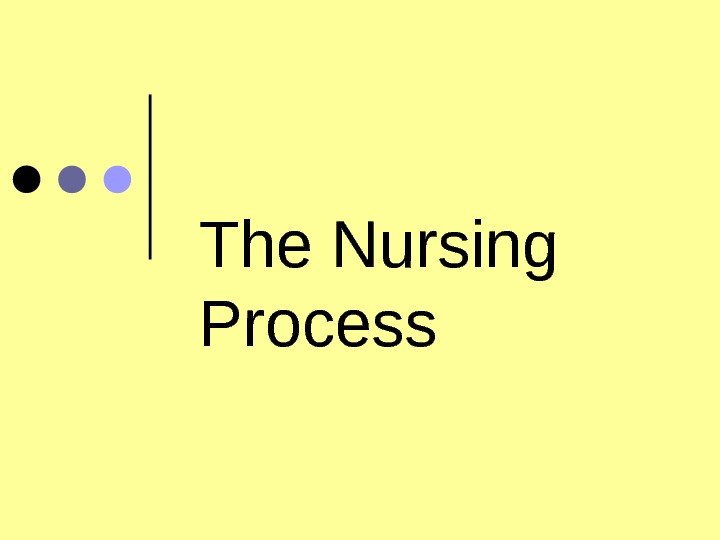





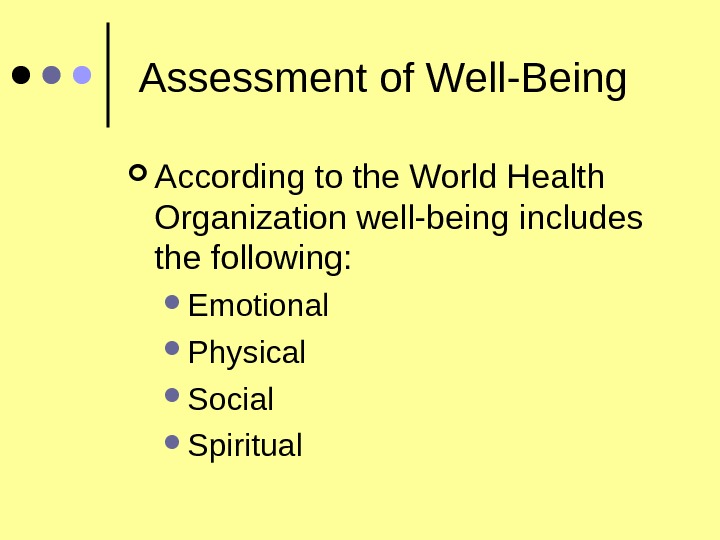


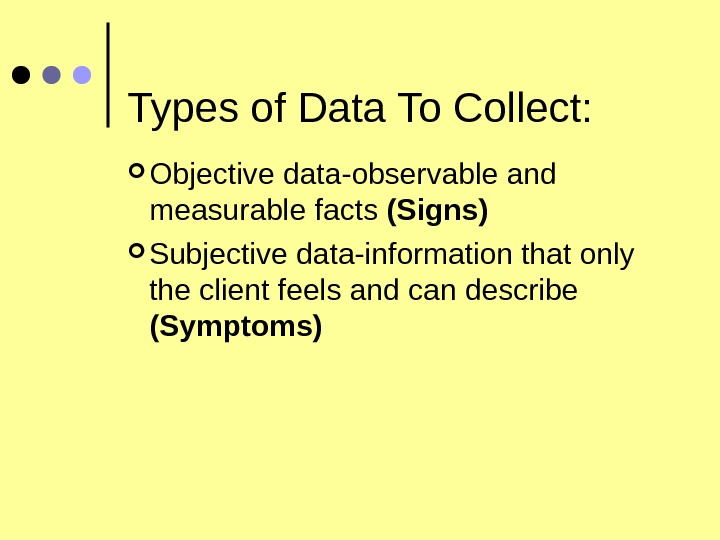




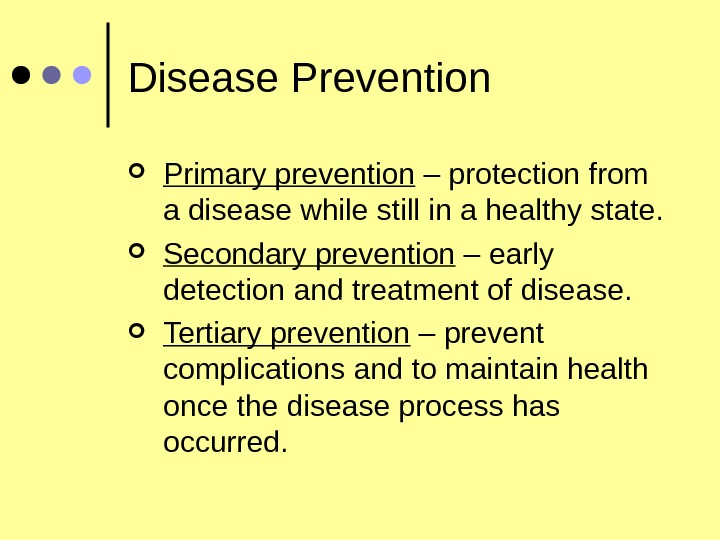




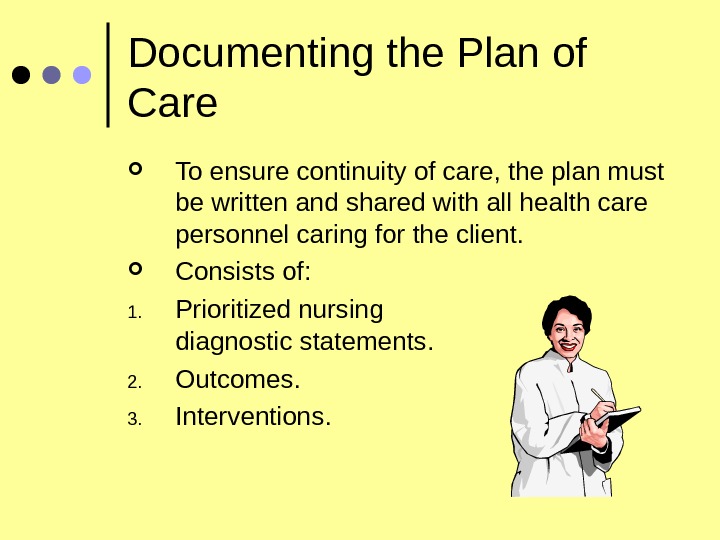


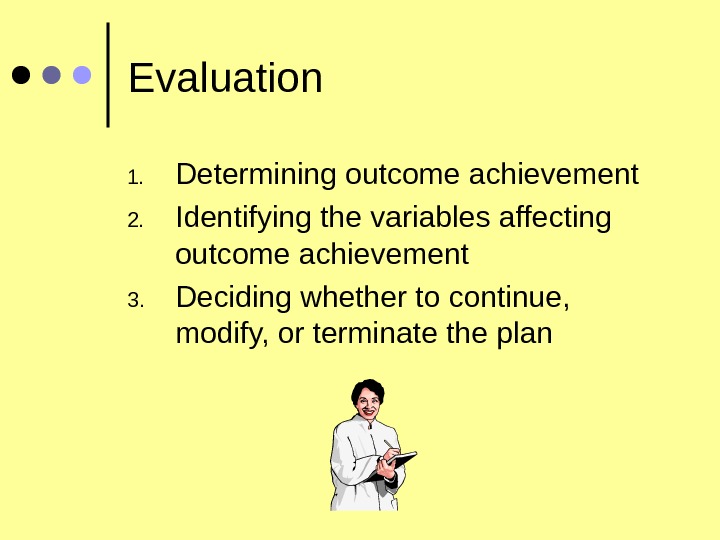
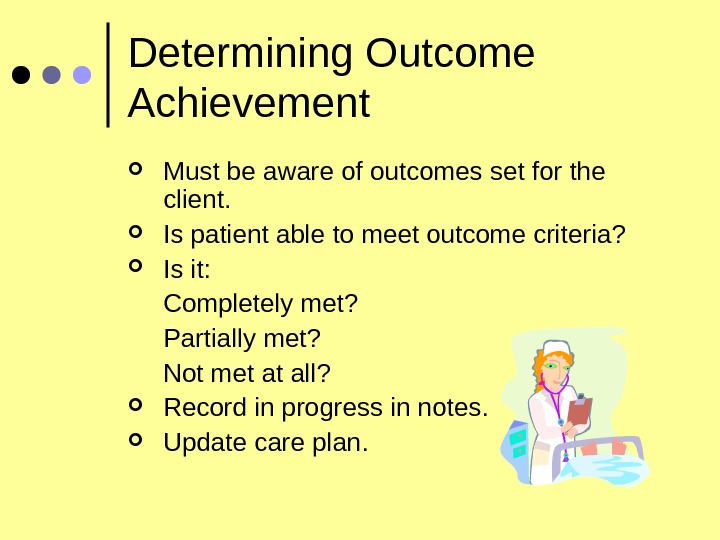



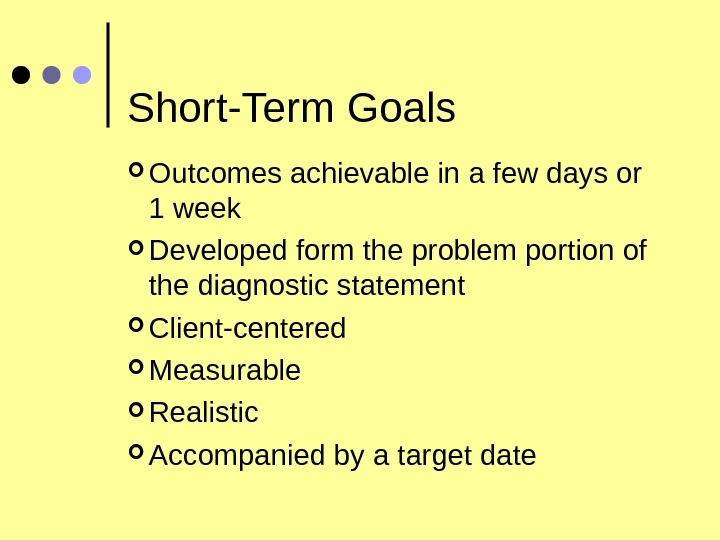

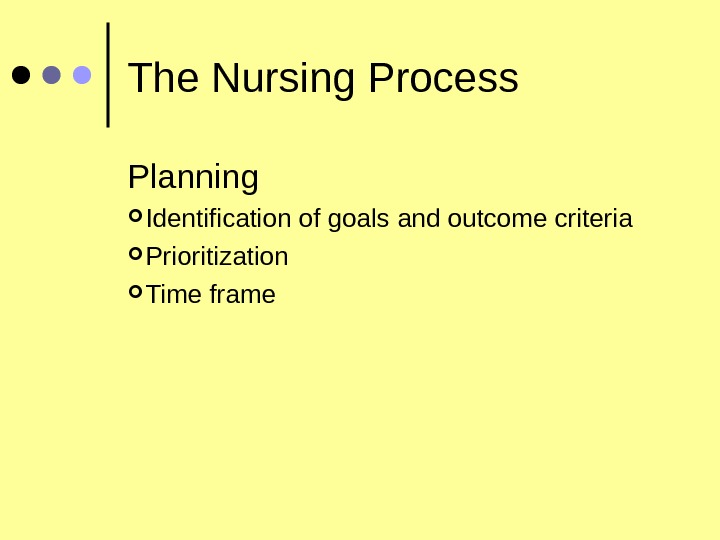
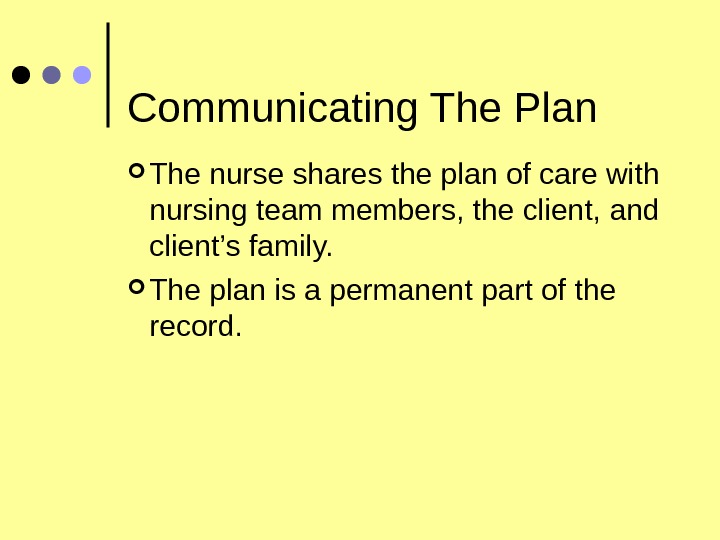
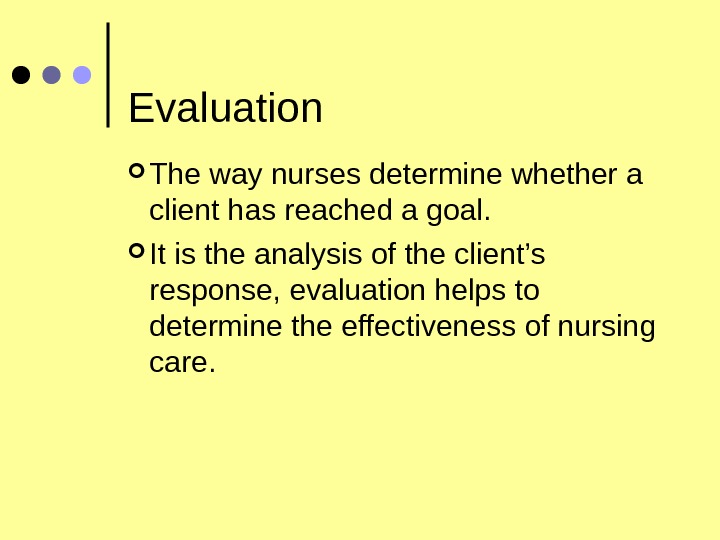


- Размер: 309 Кб
- Количество слайдов: 34
Описание презентации The Nursing Process The Nursing Process по слайдам
 The Nursing Process
The Nursing Process
 The Nursing Process An organizational framework for the practice of nursing Orderly, systematic Central to all nursing care Encompasses all steps taken by the nurse in caring for a patient
The Nursing Process An organizational framework for the practice of nursing Orderly, systematic Central to all nursing care Encompasses all steps taken by the nurse in caring for a patient
 Definition of the Nursing Process An organized sequence of problem-solving steps used to identify and to manage the health problems of clients
Definition of the Nursing Process An organized sequence of problem-solving steps used to identify and to manage the health problems of clients
 The Nursing Process Assessment Planning Implementation Evaluation
The Nursing Process Assessment Planning Implementation Evaluation
 Characteristics of the Nursing Process Within the legal scope of nursing Based on knowledge-requiring critical thinking Planned-organized and systematic Client-centered Goal-directed Prioritized Dynamic
Characteristics of the Nursing Process Within the legal scope of nursing Based on knowledge-requiring critical thinking Planned-organized and systematic Client-centered Goal-directed Prioritized Dynamic
 What Are the nurses’ Responsibilities? Recognize health problems. Anticipate complications. Initiate actions to ensure appropriate and timely treatment. Begin to think CRITICALLY !!!!!!
What Are the nurses’ Responsibilities? Recognize health problems. Anticipate complications. Initiate actions to ensure appropriate and timely treatment. Begin to think CRITICALLY !!!!!!
 Assessment of Well-Being According to the World Health Organization well-being includes the following: Emotional Physical Social Spiritual
Assessment of Well-Being According to the World Health Organization well-being includes the following: Emotional Physical Social Spiritual
 Lets Get Started : Nurse collects background info from previous charts Ensure environment is conducive Arrange seating Allow adequate time Nurse introduces self Identifies purpose of interview Ensure confidentiality of information Provide for patient needs before starting
Lets Get Started : Nurse collects background info from previous charts Ensure environment is conducive Arrange seating Allow adequate time Nurse introduces self Identifies purpose of interview Ensure confidentiality of information Provide for patient needs before starting
 ASSESSMENT Observation Interview Types of questions Environment Examination
ASSESSMENT Observation Interview Types of questions Environment Examination
 Types of Data To Collect: Objective data-observable and measurable facts (Signs) Subjective data-information that only the client feels and can describe (Symptoms)
Types of Data To Collect: Objective data-observable and measurable facts (Signs) Subjective data-information that only the client feels and can describe (Symptoms)
 CULTURAL DIVERSITY Respect INDIVIDUAL’S DIFFERENCES, What is the significance of the problem or illness to the client? What does it mean in the family/community?
CULTURAL DIVERSITY Respect INDIVIDUAL’S DIFFERENCES, What is the significance of the problem or illness to the client? What does it mean in the family/community?
 Resources Client Other individuals Previous records Consultations Diagnostics studies Relevant literature
Resources Client Other individuals Previous records Consultations Diagnostics studies Relevant literature
 Assessment Data base assessment – comprehensive information you gather on initial contact with the person to assess all aspects of health status.
Assessment Data base assessment – comprehensive information you gather on initial contact with the person to assess all aspects of health status.
 Sources of Data Primary source: Client Secondary source: Client’s family, reports, test results, information in current and past medical records, and discussions with other health care workers
Sources of Data Primary source: Client Secondary source: Client’s family, reports, test results, information in current and past medical records, and discussions with other health care workers
 Disease Prevention Primary prevention – protection from a disease while still in a healthy state. Secondary prevention – early detection and treatment of disease. Tertiary prevention – prevent complications and to maintain health once the disease process has occurred.
Disease Prevention Primary prevention – protection from a disease while still in a healthy state. Secondary prevention – early detection and treatment of disease. Tertiary prevention – prevent complications and to maintain health once the disease process has occurred.
 Planning Establish the goals, interventions and outcomes
Planning Establish the goals, interventions and outcomes
 General Guidelines for Setting Priorities 1. Take care of immediate life-threatening issues. 2. Safety issues. 3. Patient-identified issues. 4. Nurse-identified priorities based on the overall picture, the patient as a whole person, and availability of time and resources.
General Guidelines for Setting Priorities 1. Take care of immediate life-threatening issues. 2. Safety issues. 3. Patient-identified issues. 4. Nurse-identified priorities based on the overall picture, the patient as a whole person, and availability of time and resources.
 Nursing Interventions Outlining the best ways to provide nursing care. Evidence based nursing. 1. Monitor health status. 2. Minimize risks. 3. Resolve or control a problem. 4. Assist with ADLs. 5. Promote optimum health and independence.
Nursing Interventions Outlining the best ways to provide nursing care. Evidence based nursing. 1. Monitor health status. 2. Minimize risks. 3. Resolve or control a problem. 4. Assist with ADLs. 5. Promote optimum health and independence.
 Interventions Direct interventions : actions performed through interaction with clients. Indirect interventions : actions performed away from the client, on behalf of a client or group of clients.
Interventions Direct interventions : actions performed through interaction with clients. Indirect interventions : actions performed away from the client, on behalf of a client or group of clients.
 Documenting the Plan of Care To ensure continuity of care, the plan must be written and shared with all health care personnel caring for the client. Consists of: 1. Prioritized nursing diagnostic statements. 2. Outcomes. 3. Interventions.
Documenting the Plan of Care To ensure continuity of care, the plan must be written and shared with all health care personnel caring for the client. Consists of: 1. Prioritized nursing diagnostic statements. 2. Outcomes. 3. Interventions.
 Documentation Clear and concise Appropriate terminology Usually on a designated form Physical assessment Usually by Review of Systems • Overview of symptoms • Diet
Documentation Clear and concise Appropriate terminology Usually on a designated form Physical assessment Usually by Review of Systems • Overview of symptoms • Diet
 Documentation Use patient’s own words in subjective data – enclose in “ ___” (quotation marks) Avoid generalizations – be specific
Documentation Use patient’s own words in subjective data – enclose in “ ___” (quotation marks) Avoid generalizations – be specific
 Evaluation 1. Determining outcome achievement 2. Identifying the variables affecting outcome achievement 3. Deciding whether to continue, modify, or terminate the plan
Evaluation 1. Determining outcome achievement 2. Identifying the variables affecting outcome achievement 3. Deciding whether to continue, modify, or terminate the plan
 Determining Outcome Achievement Must be aware of outcomes set for the client. Is patient able to meet outcome criteria? Is it: Completely met? Partially met? Not met at all? Record in progress in notes. Update care plan.
Determining Outcome Achievement Must be aware of outcomes set for the client. Is patient able to meet outcome criteria? Is it: Completely met? Partially met? Not met at all? Record in progress in notes. Update care plan.
 Maintain individuality of care plan: 1. Is the plan realistic for the client? 2. Is the plan appropriate at the time for this particular client? 3. Were changes made in the plan when needed? 4. How does the client feel about the plan?
Maintain individuality of care plan: 1. Is the plan realistic for the client? 2. Is the plan appropriate at the time for this particular client? 3. Were changes made in the plan when needed? 4. How does the client feel about the plan?
 Planning The process of prioritizing nursing diagnoses and collaborative problems, identifying measurable goals or outcomes, selecting appropriate interventions, and documenting the plan of care. The nurse consults with the client while developing and revising the plan.
Planning The process of prioritizing nursing diagnoses and collaborative problems, identifying measurable goals or outcomes, selecting appropriate interventions, and documenting the plan of care. The nurse consults with the client while developing and revising the plan.
 Setting Priorities Determine problems that require immediate action Maslow’s Hierarchy of Human Needs
Setting Priorities Determine problems that require immediate action Maslow’s Hierarchy of Human Needs
 Short-Term Goals Outcomes achievable in a few days or 1 week Developed form the problem portion of the diagnostic statement Client-centered Measurable Realistic Accompanied by a target date
Short-Term Goals Outcomes achievable in a few days or 1 week Developed form the problem portion of the diagnostic statement Client-centered Measurable Realistic Accompanied by a target date
 Long-Term Goals Desirable outcomes that take weeks or months to accomplish for client’s with chronic health problems
Long-Term Goals Desirable outcomes that take weeks or months to accomplish for client’s with chronic health problems
 The Nursing Process Planning Identification of goals and outcome criteria Prioritization Time frame
The Nursing Process Planning Identification of goals and outcome criteria Prioritization Time frame
 Communicating The Plan The nurse shares the plan of care with nursing team members, the client, and client’s family. The plan is a permanent part of the record.
Communicating The Plan The nurse shares the plan of care with nursing team members, the client, and client’s family. The plan is a permanent part of the record.
 Evaluation The way nurses determine whether a client has reached a goal. It is the analysis of the client’s response, evaluation helps to determine the effectiveness of nursing care.
Evaluation The way nurses determine whether a client has reached a goal. It is the analysis of the client’s response, evaluation helps to determine the effectiveness of nursing care.
 The Nursing Process Evaluation Ongoing part of the nursing process Determining the status of the goals and outcomes of care Monitoring the patient’s response to drug therapy
The Nursing Process Evaluation Ongoing part of the nursing process Determining the status of the goals and outcomes of care Monitoring the patient’s response to drug therapy
 Documentation Clear and concise Appropriate terminology Usually on a designated form Physical assessment Usually by Review of Systems • Overview of symptoms • Diet • Each body system
Documentation Clear and concise Appropriate terminology Usually on a designated form Physical assessment Usually by Review of Systems • Overview of symptoms • Diet • Each body system
